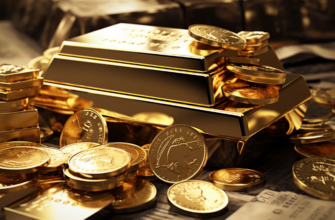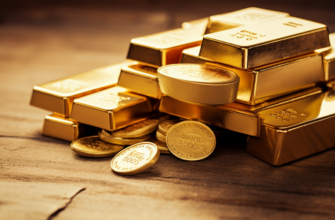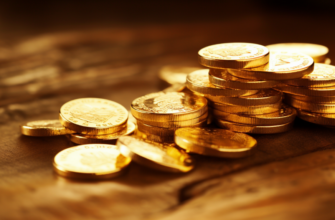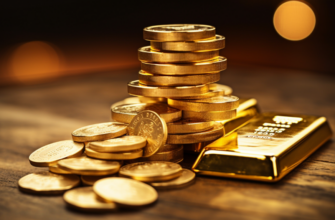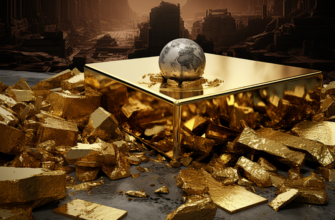When it comes to investing, precious metals have long been recognized as a safe haven for preserving wealth. Gold, in particular, has always held a special allure for investors. However, there are other precious metals such as silver, platinum, and palladium that also present intriguing investment opportunities. In this article, we will embark on a comparative analysis of investing in gold versus these other precious metals, exploring their unique characteristics, market dynamics, and potential for long-term growth.
The Timeless Allure of Gold
Gold has a rich history, spanning centuries, as a trusted store of value. Its enduring appeal lies in its scarcity and resilience. Gold has been coveted for its beauty, making it a popular choice for jewelry, but it also holds a significant place in the financial world. Investors turn to gold during times of economic uncertainty and as a hedge against inflation.
One of the advantages of investing in gold is its universal acceptance as a valuable asset. Gold is recognized globally, which means it can be easily traded and liquidated. Whether you choose to invest in physical gold in the form of bars or coins, or through gold exchange-traded funds (ETFs), you can enjoy the security and flexibility that gold offers.
Exploring the Potential of Silver
e3c8d9bfdd94882533d47f78d5c05fe3.png
Silver, often referred to as “the poor man’s gold,” has its own unique investment appeal. While silver shares some similarities with gold – its scarcity being one of them – it differentiates itself in several key ways.
Firstly, silver has a significant industrial demand. It is a crucial component in various industries, including electronics, solar panels, and medical applications. This industrial demand can contribute to the overall value of silver and potentially drive up its price.
Secondly, silver’s lower price point compared to gold makes it more accessible for investors with smaller budgets. This affordability factor can attract a wider range of investors looking to diversify their portfolios.
However, it’s important to note that the silver market has historically been more volatile than gold due to its smaller market size and the influence of industrial factors. Sufficient research and careful analysis are essential when considering silver as an investment option.
The Irresistible Allure of Platinum
d41d8cd98f00b204e9800998ecf8427e.png
Platinum is often seen as the pinnacle of precious metals when it comes to rarity and exclusivity. While gold and silver shine brightly in the investment landscape, platinum quietly commands attention.
One of the most significant differences between platinum and other precious metals is its predominant industrial use. Platinum plays a vital role in various industries, most notably automotive manufacturing and jewelry. As these industries continue to grow, the demand for platinum is likely to increase, potentially driving its price upwards.
Additionally, platinum has historically traded at a higher price than gold due to its scarcity. This elevated price point can be attractive to investors seeking potentially higher returns. It’s worth noting, however, that platinum is subject to price fluctuations and market volatility, much like any other investment.
Exploring the Potential of Palladium
d41d8cd98f00b204e9800998ecf8427e.png
While often overshadowed by its more well-known counterparts, palladium has been gaining attention in recent years. Palladium, like platinum, is largely driven by industrial demand. Its primary use lies in the automotive industry, specifically in catalytic converters, which help reduce emissions.
The demand for palladium has been steadily increasing due to stricter emissions regulations worldwide. This growing demand, coupled with limited supply, has driven up the price of palladium. In fact, at times, the price of palladium has even surpassed that of gold.
It’s important to understand the unique dynamics of the palladium market. While its growth potential is intriguing, investors should exercise caution, as the price of palladium can be affected by factors such as economic conditions, geopolitical tensions, and fluctuations in supply and demand.
Conclusion
d41d8cd98f00b204e9800998ecf8427e.png
Investing in precious metals can be a prudent diversification strategy for any investor. While gold holds its position as a timeless favorite, silver, platinum, and palladium offer alternative opportunities with their own unique dynamics and growth potential.
When considering investing in any precious metal, it is crucial to conduct thorough research, study market trends, and consult with financial advisors. Each metal carries its own set of risks and rewards, tailored to different investment goals and risk tolerance levels.
Ultimately, the decision to invest in gold, silver, platinum, or palladium lies in understanding your investment objectives, market dynamics, and the risks associated with each metal. With careful consideration, a diversified portfolio that includes one or more of these precious metals can potentially help you preserve and grow your wealth over the long term.
